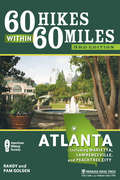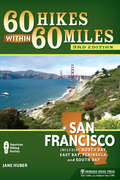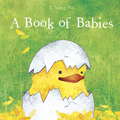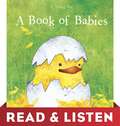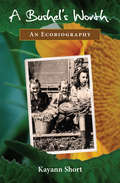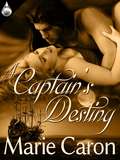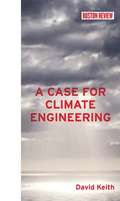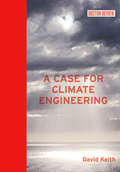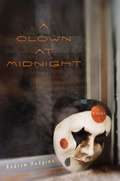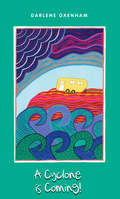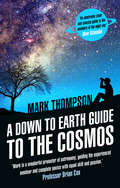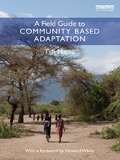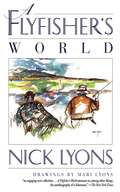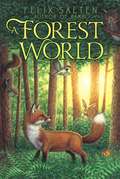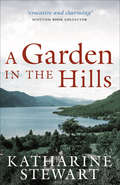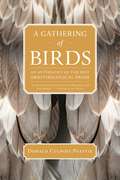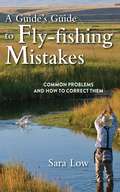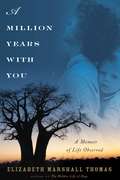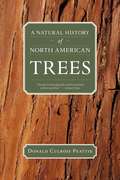- Table View
- List View
60 Hikes Within 60 Miles: Atlanta
by Pam Golden Randy GoldenOne of the South's premier cities, Atlanta is home to an abundance of spectacular hiking and walking destinations. From urban hikes to suburban parks and rural wilderness, 60 Hikes within 60 Miles: Atlanta shows readers how to quickly drive to and enjoy the best area hikes. The Chattahoochee River National Recreation Area offers a wide range of outdoor activity, including several scenic hikes. Hikes from the Georgia mountains, Stone Mountain Park, Kennesaw Mountain National Battlefield Park, Sprewell Bluff, and locations in between provide Atlantans a diverse combination of hikes in length and difficulty.In addition to scenic charm, many hikes have great historical appeal, such as Burnt Hickory Loop and Cheatham Hill Trail. Other trails, such as Grant Park Loop and the Atlanta Ramble, feature major Atlanta attractions. Complete with directions, maps, and a wealth of historical detail, the guide beckons hikers of all ages and fitness levels into the out of doors.With this newly revised and updated 3rd edition, hikers will have no trouble selecting the perfect hike for spending an hour or an afternoon out on the beautiful trails of Atlanta.
60 Hikes Within 60 Miles: San Francisco
by Jane HuberBay Area parks and preserves offer a dramatic variety of landscapes, from rugged redwood-forested canyons to breezy coastal bluffs, grassy rolling hills to sunny chaparral-coated hillsides. Well-known destinations such as Point Reyes National Seashore, Mount Diablo State Park, Mount Tamalpais State Park, and many other more obscure jewels of the Bay Area park system are just a short drive from the heart of San Francisco. Completely updated and including several new hikes and a complete new map set, 60 Hikes within 60 Miles: San Francisco guides readers to a splendid assortment of trails in the nine counties surrounding one of the world's most beautiful cities. Whether hikers crave a quick and easy get-out-of-town stroll or a challenging day-long trek through wilderness, this book is the perfect trailblazer, for city natives and first-time visitors alikeConsider yourself warned: Hiking in the Bay Area can be an intense and addictive experience. Sure, other areas of California are home to more esteemed landforms and parks-Yosemite is one of many world-class parks within a day's drive, and backpackers traverse the state as they trek one of the country's longest routes, the Pacific Crest Trail. Throughout the Bay Area there are many "destination" parks, where people from all over the world flock to walk among giant redwoods or whale-watch from a wildflower-dotted coastal bluff. But there are hundreds of smaller parks unknown to most tourists and even lifelong residents, and short drives (or in some cases bus trips, walks, or bike rides) lead to numerous parks and preserves with stunning views, bountiful wildlife, and quiet trails. These "backyard" preserves are especially beneficial to the residents of the Bay Area's most densely packed cities, San Jose, San Francisco, and Oakland. Local parks provide close-to-home outlets for exercise and nature exploration on a daily basis-thousands of people living in the foothills of Mount Tamalpais can literally walk from their front doors for miles, all the way to the top of the mountain if they like. Locals hike parks and open-space preserves bordering the towns of Berkeley, Mill Valley, and Woodside daily, and they take active roles in maintaining the trails. Getting to know your backyard means getting to love your backyard-and we fight for what we love. This dedication to open space has led many ordinary citizens in rallies to save some of our most cherished Bay Area spots.The campaign to preserve open space began in the era of John Muir, and the list of protected parklands is long and impressive. Battles continue, and development still threatens many special areas. As you make your way over trails throughout the Bay Area, think of what we could have lost and have already preserved: old growth redwoods in Muir Woods saved from logging, Point Reyes National Seashore and the Marin Headlands saved from huge housing complexes, various small parks including Edgewood saved from development as golf courses, as well as many other "common" plots of land preserved to make life a little better for the surrounding community.
A Book of Babies
by Il Sung NaWhen the flowers begin to bloom and the world starts turning green, animals everywhere are born. Some have lots of brothers and sisters. Some have none at all. Some are born with soft, warm fur, while some are born with smooth scales. Some can walk right away--others need a little help! As with Il Sung Na's previous offerings, A Book of Babies is filled with rich illustrations, endearing animals, and a spare text--all wrapped up in a gorgeous package.
A Book of Babies: Read & Listen Edition
by Il Sung NaWhen the flowers begin to bloom and the world starts turning green, animals everywhere are born. Some have lots of brothers and sisters. Some have none at all. Some are born with soft, warm fur, while some are born with smooth scales. Some can walk right away—others need a little help! As with Il Sung Na's previous offerings, A Book of Babies is filled with rich illustrations, endearing animals, and a spare text—all wrapped up in a gorgeous package.This Read & Listen Edition contains audio narration.
A Bushel's Worth
by Kayann ShortIn this love story of land and family, Kayann Short explores her farm roots from her grandparents' North Dakota homesteads to her own Stonebridge Farm, an organic, community-supported farm on the Colorado Front Range where small-scale, local agriculture borrows lessons of the past to cultivate sustainable communities for the future."A Bushel's Worth is my favorite kind of nonfiction. Not only is it about many topics close to my heart-gardening, food, family-it is a beautifully told story, and a love story at that, centered around the love of a couple, their love for the land, and a community's love for a way of life. This book forever changed my perspective and awareness as I 'walk out' in my own garden."--Katrina Kittle, author, The Blessings of the Animals"A heartfelt meditation on farm, food, and family. A Bushel's Worth tells a love story of the land and a life spent caring for it."-Hannah Nordhaus, author, The Beekeeper's Lament: How One Man and Half a Billion Honeybees Help Feed America"Kayann Short shares a passionate and often lyrical account of how she and her husband John took their first brave steps toward revitalizing a small Colorado farm and with it their lives and the community they drew around them. This is a book about how agriculture continues to create culture when it is practiced with generosity, creativity and attention. It is an inspiring story, a gift for all of us, both on and off the farm, who are trying to learn how to slow down our frenzied lives so that we may give ourselves to what really matters."-Gregory Spaid, author, Grace: Photographs of Rural America"With a companionable mix of literary and earthy sensibilities, Kayann Short writes with graceful, ferocious attentiveness [and] finds reassurance for herself and her modern family in "the old wisdom of the fields."-John Calderazzo, author, Rising Fire: Volcanoes & Our Inner Lives"[A] beautifully written and sensually rich 'ecobiography' of farm life...A Bushel's Worth is a loving natural history - of a farm, a marriage, and a way of life that has changed interestingly and dramatically over just a few generations."-Jane Shellenberger, author, Organic Gardener's Companion: Growing Vegetables in the West"The book is a substantial meal...as much about growing community as it is about growing food, and it leaves the reader with a generous bushel of instruction and inspiration on both counts."-Susan Becker, Director, Boulder Public Library Oral History Program"A Bushel's Worth: An Ecobiography eloquently depicts humans and nature coexisting and mutually benefiting not only in theory, but in actuality...where people treat each other respectfully as they gently work on and with the land."-Shelly Eberly, National Outings Leader, Sierra Club
A Captain's Destiny
by Marie CaronA roguish sea captain and a lady of privilege. They come from different worlds. But when his life and freedom are threatened, she'll risk it all to save him. Can the love of one woman set a man free and lead him to his future? A spicy, new romance from author Marie Caron, A Captain's Destiny is a passionate story of undying faith and the power of love.Before being accused of a crime he did not commit, Jack O'Bannon, sea captain and handsome rogue, had firmly believed he was the master of his own destiny. But the chain of events that is set in motion will make him question everything--and everyone--he's ever believed in. Will the love of one woman be enough to free him and guide him to his future?Lady Katherine Conlon had led a sheltered life, protected by everyone around her, including a boy in her father's employ. Never did she dream that one day she would return the favor, saving the boy and loving him as only a woman can love a man. But can she overcome the differences between them and take control of her own destiny?Content Notes: Spicy
A Case for Climate Engineering
by David KeithClimate engineering -- which could slow the pace of global warming by injecting reflective particles into the upper atmosphere -- has emerged in recent years as an extremely controversial technology. And for good reason: it carries unknown risks and it may undermine commitments to conserving energy. Some critics also view it as an immoral human breach of the natural world. The latter objection, David Keith argues in "A Scientist's Case for Climate Engineering," is groundless; we have been using technology to alter our environment for years. But he agrees that there are large issues at stake. A leading scientist long concerned about climate change, Keith offers no na've proposal for an easy fix to what is perhaps the most challenging question of our time; climate engineering is no silver bullet. But he argues that after decades during which very little progress has been made in reducing carbon emissions we must put this technology on the table and consider it responsibly. That doesn't mean we will deploy it, and it doesn't mean that we can abandon efforts to reduce greenhouse gas emissions. But we must understand fully what research needs to be done and how the technology might be designed and used. This book provides a clear and accessible overview of what the costs and risks might be, and how climate engineering might fit into a larger program for managing climate change.
A Case for Climate Engineering (Boston Review Books)
by David KeithA leading scientist argues that we must consider deploying climate engineering technology to slow the pace of global warming. Climate engineering—which could slow the pace of global warming by injecting reflective particles into the upper atmosphere—has emerged in recent years as an extremely controversial technology. And for good reason: it carries unknown risks and it may undermine commitments to conserving energy. Some critics also view it as an immoral human breach of the natural world. The latter objection, David Keith argues in A Scientist's Case for Climate Engineering, is groundless; we have been using technology to alter our environment for years. But he agrees that there are large issues at stake. A leading scientist long concerned about climate change, Keith offers no naïve proposal for an easy fix to what is perhaps the most challenging question of our time; climate engineering is no silver bullet. But he argues that after decades during which very little progress has been made in reducing carbon emissions we must put this technology on the table and consider it responsibly. That doesn't mean we will deploy it, and it doesn't mean that we can abandon efforts to reduce greenhouse gas emissions. But we must understand fully what research needs to be done and how the technology might be designed and used. This book provides a clear and accessible overview of what the costs and risks might be, and how climate engineering might fit into a larger program for managing climate change.
A Clown at Midnight: Poems
by Andrew Hudgins“Recklessness and rigor, in equal measure, mark the stirring poetics of Andrew Hudgins in this fine new book. Hudgins can wrestle a rhyme scheme into submission with one hand tied behind his back and can penetrate the black heart of history with a single, subtly rendered detail. He laughs with Democritus and weeps with Heraclitus and, line by distillate line, contrives a tonic antidote to “the acetone / of American inattention.” — Linda GregersonIn A Clown at Midnight Andrew Hudgins offers a meditation on humor with a refreshing poignancy and cutting wit. He touches on love and nature, but at its core this collection is about the consolations and terrors, the delights and discomforts, of laughter, taking its title from a quote by Lon Chaney Sr.: “The essence of true horror is a clown at midnight.” Skillfully probing paradoxes, Hudgins conjures the titular clown: “Down these mean streets a bad joke walks alone / bruised head held low, chin tucked in tight, eyes down / defiant. He laughs and it turns to a moan.” Hudgins gives us utter honesty and accessible verse, exploring moments both uncomfortable and satirical while probing the impulse to confront life’s most demanding trials with laughter.“Hudgins’s poems are often funny, hinging on a joke or wisecrack or malapropism, but human nature red in tooth and claw has always been his greatest theme.” — BookPage
A Cyclone Is Coming
by Darlene OxenhamWith themes of family, cooperation, safety, and a positive attitude, this book about preparing for a natural disaster lets kids experience a cyclone moment-by-moment A cyclone is coming to Useless Loop. Annie has never been in a cyclone, but everyone else seems to know just what to do. She helps her parents get everything ready, then waits to see what the cyclone will bring. Will it be scary? Will it be boring? Annie finds out it is both, and more in this exciting read that celebrates the richness of Australian Aboriginal storytelling.
A Deadly Mistake (Fountas & Pinnell LLI Red #Level M)
by Carmen MoraisWhen graduate student Donald Currey cut down an ancient tree to find out how old it was he learned that he had killed the oldest known living thing on Earth. Could anything good come out of such a mistake?
A Down to Earth Guide to the Cosmos
by Mark ThompsonTo the beginner, the star-filled night sky can seem mysterious and unfathomable. But with this book as a guide the awesome nature of the Cosmos is brought down to Earth. Over the course of twelve chapters Mark Thompson, one of the presenters on BBC One’s Stargazing Live and the resident astronomer on ITV’s The Alan Titchmarsh Show, will take you on a journey through space, tackling the key concepts of astronomy and unlocking the secrets of the sky. From the origins of our Universe to the ever evolving techniques used to explore deep space, A Down to Earth Guide to the Cosmos traces the journey of galactic discovery that has obsessed mankind for thousands of years.Accompanying the narrative, a series of monthly sky guides focus on the astronomical highlights visible at each given time of year, with handy charts to show you exactly what to look for and how to navigate around the sky at night. As fascinating as it is accessible, A Down to Earth Guide to the Cosmos is a must for anyone who gazes up and wishes they knew more about the final frontier...
A Field Guide to Community Based Adaptation
by Tim MageeThe world's poor will be the most critically affected by a changing climate—and yet their current plight isn't improving rapidly enough to fulfill the UN’s Millennium Development Goals. If experienced development organizations are finding it difficult to solve decades-old development problems, how will they additionally solve new challenges driven by climate change? This book illustrates how including community members in project design and co-management leads to long-lasting, successful achievement of development and adaptation goals. This field guide provides a system of building block activities for staff on the ground to use in developing and implementing successful adaptation to climate change projects that can be co-managed and sustained by communities. Based on years of use in 129 different countries, the techniques illustrated in this field guide use a step-by-step progression to lead readers through problem assessment, project design, implementation, and community take over. The book equips development staff with all the tools and techniques they need to improve current project effectiveness, to introduce community based adaptation into organizational programming and to generate new projects. The techniques provided can be applied to broad range of challenges, from agriculture and soil and water challenges, to health concerns, flood defences and market development. The book is supported by a user-friendly website updated by the author, where readers can download online resources for each chapter which they can tailor to their own specific projects. This practical guide is accessible to all levels of development staff and practitioners, as well as to students of development and environmental studies.
A Flyfisher's World
by Nick Lyons Mari LyonsThis ample selection of articles and essays by one of America's most popular writers about fly-fishing begins with a moment on Michigan's Au Sable River--the exact moment when the author lost his heart to fly-fishing. This collection chronicles a fishing life punctuated by a revealing trip with one of his grown sons and mellow reflections from a hospital bed.This is the broadest of Nick Lyons's books, with sections on tarpon and pike fishing in the Marquesas and in France, bass bugging on a small Connecticut pond, and trout fishing on unnamed creeks and blue-ribbon western rivers, as well as reflections on such aspects of the sport as the flies that are the underpinning of it all, the pursuit of records, the odd characters he's met along the way, and the increasing challenge of crowds who pursue this ever-popular sport.By turns canny, hilarious, inquiring, and philosophic, A Flyfisher's World is an impressive addition to Nick Lyons's important body of writing about fly-fishing.
A Forest World
by Felix SaltenThe forest is a whole different world. . . Felix Salten's classic story of wild and tame animals coming together is brought vividly to life in this refreshed edition. To the animals of Lodge Farm, the woods are a forbidden place filled with danger and uncertainty. For the wild animals in the forest, the farm is just as frightening, because Man lives there. The two worlds are next to one another, but couldn't be further apart. When the groups, tame and wild, begin to interact, each begins to question how life would be different on the other side. Manni the donkey ventures into the forest for an adventure, while a doe and her two fawns seek the safety of the barn when poachers threaten them in the woods. Will the animals choose to stay in their new lives? Or will the call of home be too great?
A Garden in the Hills
by Katharine StewartThe author of the classic A Croft in the Hills takes us through a year in her Scottish Highlands garden and its many delights. This illustrated book celebrates one of humankind&’s oldest pleasures. Month by month, we are taken through a year in the life of Katharine Stewart&’s garden outside the old schoolhouse in Abriachan, Scotland, where she lives with her husband and daughter. The circle of the seasons is luminously evoked as we are told of the practicalities of gardening, cooking, beekeeping, and winemaking. From a winner of a Saltire Society Award for her contribution to the understanding of Scottish Highland culture, and peppered with warm personal insights, good humor, and a love of living things, this account of the joy of nature reminds us how rewarding it is to be outdoors. &“Evocative and charming.&” —Scottish Book Collector
A Gathering of Birds
by Donald Culross PeattieA Gathering of Birds is an anthology containing selected prose about birds by nineteen famous authors, such as Hudson, Audubon, and Thoreau, and includes brief biographical information about each. The New York Times called the collection "a delightful 'gathering' that Mr. Peattie has presented, and his own contributions to the book make it something new and valuable in this field."
A Gathering of Birds
by Donald Culross PeattieA Gathering of Birds is an anthology containing selected prose about birds by nineteen famous authors, such as Hudson, Audubon, and Thoreau, and includes brief biographical information about each. The New York Times called the collection "a delightful 'gathering' that Mr. Peattie has presented, and his own contributions to the book make it something new and valuable in this field."
A Guide's Guide to Fly-Fishing Mistakes: Common Problems and How to Correct Them
by Rod Walinchus Sara LowA licensed fishing guide’s observations on the common mistakes made by anglers, A Guide’s Guide to Fly-Fishing Mistakes provides practical tips on how to improve fly-fishing techniques and break bad habits. Licensed fishing guide and instructor Sara Low offers remedies to freshwater anglers on topics that include correctly approaching fish, improving fly selection, proper presentation, consistent and accurate casting, efficient hooking and landing of fish, as well as pointers for fishing spring, summer, fall, and winter.Although written for anglers with experience, the notes will be just as helpful to anglers who have not had time to develop bad habits. Low elaborates on how to fix the mistakes many experienced fly-fishers make. Supplementing her methods are tales that illustrate different mistakes made on the water with her suggested correction for each mistake. Taking these suggestions to heart will provide you with that “ah-ha!” moment you’ve been waiting for.As a guide, Low sees the same mistakes being made over and over again. Now you can see them too with this must-have resource. More fish, bigger fish, better fish—whatever the goal, the experienced and novice angler will find meaningful advice for greater fishing success.
A Love Affair with Birds: The Life of Thomas Sadler Roberts
by Sue LeafThe father of Minnesota ornithology, whose life story opens a window on a lost world of nature and conservation in the state&’s early days Imagine a Minneapolis so small that, on calm days, the roar of St. Anthony Falls could be heard in town, a time when passenger pigeons roosted in neighborhood oak trees. Now picture a dapper professor conducting his ornithology class (the university&’s first) by streetcar to Lake Harriet for a morning of bird-watching. The students were mostly young women—in sunhats, sailor tops, and long skirts, with binoculars strung around their necks. The professor was Thomas Sadler Roberts (1858–1946), a doctor for three decades, a bird lover virtually from birth, the father of Minnesota ornithology, and the man who, perhaps more than any other, promoted the study of the state&’s natural history. A Love Affair with Birds is the first full biography of this key figure in Minnesota&’s past.Roberts came to Minnesota as a boy and began keeping detailed accounts of Minneapolis&’s birds. These journals, which became the basis for his landmark work The Birds of Minnesota, also inform this book, affording a view of the state&’s rich avian life in its early days—and of a young man whose passion for birds and practice of medicine in a young Minneapolis eventually dovetailed in his launching of the beloved Bell Museum of Natural History.Bird enthusiast, doctor, author, curator, educator, conservationist: every chapter in Roberts&’s life is also a chapter in the state&’s history, and in his story acclaimed author Sue Leaf—an avid bird enthusiast and nature lover herself—captures a true Minnesota character and his time.
A Million Years with You
by Elizabeth Marshall ThomasOne of our greatest literary naturalists turns her famed observational eye on herself in this captivating memoir. How is it that an untrained, self-taught observer and writer could see things that professional anthropologists often missed? How is that a pioneering woman, working in male-dominated fields, without sponsors or credentials, could accomplish more than so many more celebrated and professionally educated men could manage? How can we all unlock the wisdom of the world simply by paying close attention? With their intelligence and acute insight into other cultures and species, Elizabeth Marshall Thomas's many books have won a wide and loving audience. In A Million Years with You, this legendary author shares stories from her life, showing how a formative experience in South West Africa (now Namibia) in the 1950s taught her how to pay attention to the ancient wisdom of animals and humankind. As a young woman, Marshall Thomas joined her family on an anthropological expedition to the Kalahari Desert, where she conducted fieldwork among the Ju/wa Bushmen, later publishing her findings as The Harmless People. After college, a wedding, and the birth of two children, she returned to Uganda shortly before Idi Amin's bloody coup. Her skills as an observer and a writer would be put to the test on many other occasions working with dogs, cats, cougars, deer--and with more personal struggles. A Million Years with You is a powerful memoir from a pioneering woman, an icon of American letters.
A Natural History of North American Trees
by Donald Culross Peattie"A volume for a lifetime" is how The New Yorker described the first of Donald Culross Peatie's two books about American trees published in the 1950s. In this one-volume edition, modern readers are introduced to one of the best nature writers of the last century. As we read Peattie's eloquent and entertaining accounts of American trees, we catch glimpses of our country's history and past daily life that no textbook could ever illuminate so vividly.Here you'll learn about everything from how a species was discovered to the part it played in our country's history. Pioneers often stabled an animal in the hollow heart of an old sycamore, and the whole family might live there until they could build a log cabin. The tuliptree, the tallest native hardwood, is easier to work than most softwood trees; Daniel Boone carved a sixty-foot canoe from one tree to carry his family from Kentucky into Spanish territory. In the days before the Revolution, the British and the colonists waged an undeclared war over New England's white pines, which made the best tall masts for fighting ships.It's fascinating to learn about the commercial uses of various woods -- for paper, fine furniture, fence posts, matchsticks, house framing, airplane wings, and dozens of other preplastic uses. But we cannot read this book without the occasional lump in our throats. The American elm was still alive when Peattie wrote, but as we read his account today we can see what caused its demise. Audubon's portrait of a pair of loving passenger pigeons in an American beech is considered by many to be his greatest painting. It certainly touched the poet in Donald Culross Peattie as he depicted the extinction of the passenger pigeon when the beech forest was destroyed.A Natural History of North American Trees gives us a picture of life in America from its earliest days to the middle of the last century. The information is always interesting, though often heartbreaking. While Peattie looks for the better side of man's nature, he reports sorrowfully on the greed and waste that have doomed so much of America's virgin forest.
A Natural History of North American Trees
by Donald Culross Peattie"A volume for a lifetime" is how The New Yorker described the first of Donald Culross Peatie's two books about American trees published in the 1950s. In this one-volume edition, modern readers are introduced to one of the best nature writers of the last century. As we read Peattie's eloquent and entertaining accounts of American trees, we catch glimpses of our country's history and past daily life that no textbook could ever illuminate so vividly.Here you'll learn about everything from how a species was discovered to the part it played in our country's history. Pioneers often stabled an animal in the hollow heart of an old sycamore, and the whole family might live there until they could build a log cabin. The tuliptree, the tallest native hardwood, is easier to work than most softwood trees; Daniel Boone carved a sixty-foot canoe from one tree to carry his family from Kentucky into Spanish territory. In the days before the Revolution, the British and the colonists waged an undeclared war over New England's white pines, which made the best tall masts for fighting ships.It's fascinating to learn about the commercial uses of various woods -- for paper, fine furniture, fence posts, matchsticks, house framing, airplane wings, and dozens of other preplastic uses. But we cannot read this book without the occasional lump in our throats. The American elm was still alive when Peattie wrote, but as we read his account today we can see what caused its demise. Audubon's portrait of a pair of loving passenger pigeons in an American beech is considered by many to be his greatest painting. It certainly touched the poet in Donald Culross Peattie as he depicted the extinction of the passenger pigeon when the beech forest was destroyed.A Natural History of North American Trees gives us a picture of life in America from its earliest days to the middle of the last century. The information is always interesting, though often heartbreaking. While Peattie looks for the better side of man's nature, he reports sorrowfully on the greed and waste that have doomed so much of America's virgin forest.
A Political Theology of Climate Change
by Michael S. NorthcottMuch current commentary on climate change, both secular and theological, focuses on the duties of individual citizens to reduce their consumption of fossil fuels. In A Political Theology of Climate Change, however, Michael Northcott discusses nations as key agents in the climate crisis.Against the anti-national trend of contemporary political theology, Northcott renarrates the origins of the nations in the divine ordering of history. In dialogue with Giambattista Vico, Carl Schmitt, Alasdair MacIntyre, and other writers, he argues that nations have legal and moral responsibilities to rule over limited terrains and to guard a just and fair distribution of the fruits of the earth within the ecological limits of those terrains.As part of his study, Northcott brilliantly reveals how the prevalent nature-culture divide in Western culture, including its notion of nature as "private property," has contributed to the global ecological crisis. While addressing real difficulties and global controversies surrounding climate change, Northcott presents substantial and persuasive fare in his Political Theology of Climate Change.
A Short Introduction to Climate Change
by Tony EggletonA Short Introduction to Climate Change provides a clear, balanced and well documented account of one of the most important issues of our time. It covers developments in climate science over the past 250 years and shows that recent climate change is more than the result of natural variability. It explains the difference between weather and climate by examining changes in temperature, rainfall, Arctic ice and ocean currents. It also considers the consequences of our use of fossil fuels and discusses some of the ways to reduce further global warming. Tony Eggleton avoids the use of scientific jargon to provide a reader-friendly explanation of the science of climate change. Concise but comprehensive, and richly illustrated with a wealth of full-colour figures and photographs, A Short Introduction to Climate Change is essential reading for anyone who has an interest in climate science and in the future of our planet.
